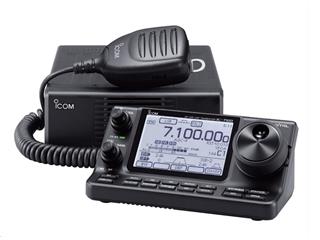Today marked the beginning of the end for amateur radio at the present QTH. We've lived very happily here for 37 years, bringing up our 2 boys and welcoming our 4 grandchildren. Now we are just a few weeks away from our move to the bungalow 300m away up on our local "hill" next to the windmill, the latter currently undergoing a £417k refubishment courtesy of a National Lottery grant. The new home is a nice place and we are looking forward to the move, but it won't be without a few sad moments: closing a chapter in our lives but also opening a new one. The last time we moved, the removal van cost just £11 - it was a LONG time ago, HI.
Today I removed the first part of the antenna system: my 20m spaced earth-electrode wire running in the back garden. Next to come down will be the coax feed from my workshop to the upstairs shack where I operate. The V2000 vertical and the Par 10/20/40 end fed will come down in a few weeks time. I also de-cluttered the bedroom shack to some extent, clearing out all manner of the "I may need this some day" rubbish that fills drawers and cupboards. It is just unbelievable how many SMPSU wall blocks I have that belonged to equipment like routers and scanners long gone. The worst is always the stuff you've kept because, "I may need this one day". I am trying to be ruthless and give it to a local charity store, recycle centre or the dump if it has not been used, read, looked at for several years. For certain something that goes will be needed next week.
I did a test at the new bungalow tonight on the internet wi-fi coverage: I took my Virgin Media wireless super-hub and set it up (locally, no internet connection) and walked around the new home with my iPod Touch 4g to see how strong the signal was in the shack, bedrooms and garden. Results were promising: I think I may get away without a range extender.
 A few hours after I commented on the price in the US of the IC-7100, I had an email from Martin Lynch and Sons announcing the UK launch on July 17th.
A few hours after I commented on the price in the US of the IC-7100, I had an email from Martin Lynch and Sons announcing the UK launch on July 17th.






